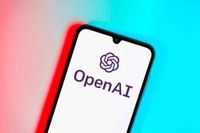OpenAI, the artificial intelligence powerhouse known for creating ChatGPT, made a significant announcement on April 1, 2025, revealing plans to develop a more open generative AI model. This marks a strategic shift for the company, which has previously been a staunch defender of closed, proprietary models. OpenAI's move comes as it faces increasing competition from open-source alternatives like DeepSeek and Meta, which have gained traction in the AI space.
Historically, OpenAI has maintained that closed models are safer, arguing that they are less vulnerable to misuse by bad actors or foreign adversaries. However, this has led to tension with former investor Elon Musk, who has criticized the company for straying from its original mission. Musk has urged OpenAI to embrace its namesake's spirit and return to being a "safety-focused force for good." This shift towards openness is likely a response to the growing reluctance among companies and governments to adopt AI products built on models they cannot modify or control, particularly when data security is a pressing concern.
Meta CEO Mark Zuckerberg recently announced that the company's Llama models have surpassed one billion downloads, highlighting the demand for AI solutions that allow users greater control. In light of this competitive landscape, OpenAI's CEO Sam Altman stated, "We've been thinking about this for a long time but other priorities took precedence. Now it feels important to do." This sentiment underscores the urgency of adapting to market demands.
As part of its new direction, OpenAI plans to gather feedback from developers through a series of events starting in San Francisco in the coming weeks, followed by sessions across Europe and the Asia-Pacific region. This collaborative approach aims to refine the new model based on user input, ensuring it meets the needs of developers and organizations alike.
In addition to this announcement, OpenAI is also riding high on the success of its latest features in ChatGPT, particularly its image-generation capabilities. Altman reported that the tool attracted "one million users" in just one hour, showcasing its growing popularity. This surge in interest is attributed to the innovative image features, which have reportedly caused OpenAI's graphics processing units to overheat due to heavy usage.
OpenAI is not just stopping at developing a new generative model; it is also finalizing a massive $40 billion funding round led by Japan's SoftBank Group, which would mark the largest capital-raising session ever for a startup. This funding is crucial for OpenAI as it transitions to a commercial company, a move that is necessary to secure the full investment from SoftBank and to attract additional capital for future AI developments.
Moreover, OpenAI has also released a new version of its GPT-4o model, which incorporates native image generation capabilities. This model can modify uploaded images or create new ones from prompts, demonstrating multi-turn consistency in refining images and improved text generation within images. Altman announced this release during a recent livestream, emphasizing that the new model is designed to handle image output as a native modality, unlike previous iterations that relied on external models like DALL-E.
According to OpenAI, the GPT-4o model can generate images with "up to 10-20 different objects," although it may struggle with more complex scenarios. Images produced by this model will include C2PA tags, indicating that they were generated by AI. OpenAI has also implemented safeguards to prevent the generation of images that violate its content policies, though it will now allow the creation of images featuring public figures, provided they do not breach any guidelines.
Feedback from users on platforms like Hacker News has praised the quality of the images generated by GPT-4o, particularly its ability to accurately render text within images. One user noted, "It very much looks like a side effect of this new architecture. In my experience, text looks much better in recent DALL-E images, but it was still noticeably mangled when printing more than a few letters. This model update seems to improve text rendering by a lot, at least as long as the content is clearly specified." However, OpenAI has acknowledged that the model may encounter difficulties with languages that use non-Latin characters, potentially producing inaccurate or hallucinated text.
In a further development, OpenAI is preparing to release its first open-weight language model with reasoning capabilities since GPT-2 in the upcoming months. This new model will allow developers to analyze and refine the trained parameters, known as weights, for specific tasks without requiring access to the original training data. Unlike open-source models that provide full access to source code and training methodologies, an open-weight model will only offer access to these weights.
Altman has indicated that the company is eager to engage with developers to determine how this model can be utilized most effectively. The first event focused on this topic will take place in San Francisco shortly, followed by additional meetings in Europe and the Asia-Pacific region. This proactive approach aims to ensure that OpenAI's offerings align with the needs and expectations of the developer community.
As OpenAI navigates this transformative phase, it faces fierce competition from various fronts. Recently, Elon Musk announced plans to merge his media platform X with his AI startup, xAI, a move that could enhance his ability to attract investment in the increasingly crowded AI market. Musk has also expressed opposition to OpenAI's shift towards a more commercial model, highlighting the differing philosophies within the AI landscape.
In summary, OpenAI's recent announcements reflect a significant pivot towards openness and collaboration in the AI industry. By embracing a more open generative AI model and engaging with developers, the company aims to adapt to evolving market demands while maintaining its commitment to safety and innovation. As it prepares for a monumental funding round and the release of new models, the future of OpenAI looks both promising and challenging.






